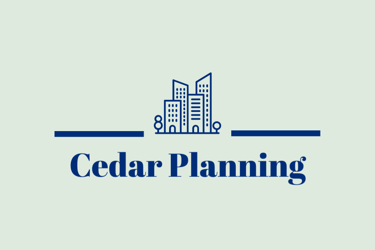Certificate of Lawfulness - Everything you need to know
Planning can be complex. At Cedar Planning we have an excellent track record of securing successful outcomes for clients. We have used that experience to create the article below.
9/15/20257 min read


You may have heard about Certificate of Lawfulness applications from a neighbours planning application, or you may have been recommended to submit one by a consultant or your local Council. In this article, we provide you with the information you need to know about Certificate of Lawfulness applications, also referred to as Lawful Development Certificates.
What is a Lawful Development Certificate?
A Lawful Development Certificate is a legal document that can be used to confirm that an existing or proposed use, operation, or activity on a property is lawful. At this stage, it is important to highlight that a Certificate of Lawfulness application is very different to a planning application.
There are two types of Lawful Development Certificates, which are as follows:
Proposed Use: If you have plans to carry out a development or change of use of a property, but you believe that this development or use is permitted via Permitted Development Rights, or isn't development, then you can apply for a Certificate of Lawfulness to confirm this. This can provide peace of mind that your proposal will be safe from enforcement action in the future.
Existing Use: If you have been using a property or land for a particular purpose for a continuous period of time, and you want to confirm that this use is lawful, you can apply for a Certificate of Lawfulness.
Certificate of Lawfulness Proposed Use
The requirements for the two Certificate of Lawfulness applications are very different, so we will take them in turn. The planning system and local councils can apply the rules harshly, and we have dealt with cases where clients have previously submitted the wrong type of Certificate of Lawfulness application, only for it to be refused on that basis alone. Therefore, it is important to make sure you are submitting the right type of application, and at Cedar Planning we can help you with this process.
Firstly, we start with the Certificate of Lawful Development Certificate for Proposed Use.
When would I use a Lawful Development Certificate Application for Proposed Use?
Achieving a Certificate of Lawfulness can be helpful for businesses and landowners alike.
If you are proposing to extend your home under under Permitted Development Rights, securing a Certificate of Lawfulness will give you peace of mind that your works would be inline with the requirements. Thousands of unsuspecting homeowners across the country fall into the trap of thinking their works comply with Permitted Development Rights, but the rules can be complex and even removed in some instances. The worst case scenario means they have to remove their extensions which cost tens if not hundreds of thousands of pounds to build. By applying for a Certificate of Lawfulness at an early stage you will get confirmation from the Council if your works are lawful or not.
A common example, is that Permitted Development Rights may have been removed from your property by a planning condition or an Article 4 Direction, a Certificate of Lawfulness application will confirm whether this applies to your property or not. There are also a number of different requirements relating to size, height, location and materials. By securing a Certificate of Lawfulness and building the extension out in accordance with those plans you will be free from enforcement action.
Businesses can also make use of Certificate of Lawfulness applications for Proposed Use. For example, if your business is looking to move into a new premises, the new Use Class E provides great flexibility for potential uses. However, there may be some restrictive planning conditions, and it is recommended that a Lawful Development Certificate is achieved to determine that the proposed use is lawful.
What information do I need for a Lawful Development Certificate Application for Proposed Use?
The level of information required will vary depending on the project. We recommend that Certificate of Lawfulness Applications include a site location plan, scaled drawings, a supporting statement and any other information that may be relevant. If you intend to do works in line with Permitted Development Rights it is very important that your plans clearly comply with the different requirements. Minimal differences between what is allowed under Permitted Development Rights and what your plans show is often enough to get a refusal, which will cause delays and extra costs.
Certificate of Lawfulness Existing Use
When would I use a Lawful Development Certificate Application for an Existing Use?
Certificate of Lawfulness applications are often used to determine that a use or works have become lawful over a period of time. Depending on the works or change of use and when they occurred, this is judged against the 4-year or 10-year rule (see here).
Common examples include converting a garage, outbuilding, or annexe into an independent dwelling. If enough time has passed, it can become immune from enforcement action, and a Certificate of Lawfulness can confirm this. They are particularly useful if your local council has opened an enforcement case against you, and ask you to stop using a building or premises for a certain use.
What information do I need for a Lawful Development Certificate Application for Existing Use?
The level of information required will vary on the project. Unlike planning applications, Certificate of Lawfulness applications for existing use are judged on the evidence supplied to the Council or Planning Inspector.
A common project that we undertake at Cedar Planning is where a building, or part of a building, has been used as a separate house or flat. This could be an outbuilding, garage, or commercial property, and our clients have been approached by the Councils enforcement team to stop the use. Through the Certificate of Lawfulness route, you will need to demonstrate to the Council that the property has been used as an independent dwelling for 4 years in most cases (10 years in a limited number of cases).
In this case the evidence can include the following:
Signed statutory declaration(s);
Council tax bills;
Copies of rent agreements and/or payments;
Electricity / gas bills;
Electoral roll;
Building control certificates;
Evidence of works completed (e.g. invoices);
Photographic evidence.
Planning legislation requires this evidence to be specific and unambiguous to the subject. For example, Council Tax bills would need to be clearly made out to the building (or part of building) to which the Certificate of Lawfulness applies.
We also recommend submitting the relevant planning drawings, such as a site location plan and scaled drawings. At Cedar Planning we are well placed to provide expert supporting statements which bring together the relevant evidence and legal requirements.
Lawful Development Certificate v Planning Permission
As we highlighted earlier, Lawful Development Certificate applications are different to planning applications, and before working out which one is best for you, it is worth seeking professional advice.
Firstly, a planning application is judged against the relevant planning policies and other material considerations. This includes matters of design, location, amenity, and its impacts. A Certificate of Lawfulness application is assessed purely on the evidence submitted to the Council.
If you are proposing works in line with Permitted Development Rights, we always advise submitting a Lawful Development Certificate application. This is because the Council's own policies on design matters are not taken into account. This means that the Councils and planning officers pet hates do not come into play. The best example of this is dormer loft conversions, which is well explained by a case study below:
Our client had submitted a planning application for a rear dormer loft conversion, incorrectly thinking that their works did not meet the relevant Permitted Development Rights. This planning application was assessed by the Council without any consideration for the Permitted Development Rights, and assessed the proposal against the local planning policies, and the Council refused planning permission due to the visual impact of the proposal. We reviewed the proposal and considered that the proposal would meet Permitted Development Rights for loft conversions, and suggested submitting a Lawful Development Certificate application. The plans and our supporting evidence identified that the proposal complied with the Permitted Development Rights, and a Certificate of Lawfulness application was subsequently granted by the Council. This confirmed that the exact same rear dormer for which planning permission was refused, can be built using Permitted Development Rights.
For other forms of development that are often unlikely to achieve planning permission, such as 'beds-in-sheds' or the conversion of buildings into residential uses in areas where planning permission isn't normally granted. If you have clear and convincing evidence that the uses have been going on long enough to avoid enforcement action (often referred to as the 4 and 10-year rule), then a Lawful Development Certificate for Existing use is likely to be the best option. At Cedar Planning we have dealt with cases where clients have been refused retrospective planning permission for the use of an outbuilding as an independent dwelling, but we have subsequently secured a Certificate of Lawfulness to evidence that because of the passage of time, the building can lawfully be used
It is important to note that a previously refused planning application would not impact on your chances of successfully achieving a Certificate of Lawfulness application. Alternatively, if you have been refused a Lawful Development Certificate, but your proposal complies with the relevant planning policies, the fact that you failed to achieve a Lawful Development Certificate is unlikely to impact on your chances of success.
Lawful Development Fee
The Lawful Development Fee for submitting an application varies depending on the project, and if you are submitting an existing use application, or proposed use application.
The Lawful Development Fee for an existing use or operation is the same fee as a full planning application. For example, for a new dwelling the Lawful Development Fee is currently £578 for each house + a Planning Portal service fee.
The Lawful Development Fee for a proposed use is half the normal planning fee. For example, alterations or extensions to a single house, the Lawful Development Fee is currently £129 + a Planning Portal service fee.
The Government's Planning Portal provides a helpful fee calculator for all types of applications, and the application fee is confirmed by the Council at the time of your application. Please note that these fees were correct at the time of writing, and are due to increase each year in April.
Lawful Development Timescale
Lawful Development Certificate applications are expected to be determined within 8-weeks of them being validated by the Council. In some complex cases, the Lawful Development Timescale can be increased.
How Do I Make A Lawful Development Certificate Application?
Lawful Development Certificate applications can be submitted via the Government's Planning Portal. At Cedar Planning we have vast experience in dealing with Lawful Development Certificate applications, and can provide all of the relevant documentation as well as submitting and monitoring your application for you. Contact us today to find out how we can help you.
Contacts
Email: info@cedarplanning.co.uk
Phone: 07418 610156
Office (by appointment only) Cedar Planning Ltd, 82a James Carter Road, Mildenhall, Bury St Edmunds, IP28 7DE


Click the above button for a free Whatsapp consultation

